What is ChainGuardians?
ChainGuardians is a role-playing adventure game (RPG) with non-fungible tokens (NFTs) driving much of the core gameplay. There are 2 primary ways to engage the game: as an NFT mining platform or as a more traditional RPG. Both provide ways to earn ChainGuardians Coin (CGC), 1 of 2 native in-game tokens.
ChainGuardians adds a layer of complexity with the addition of a second token. The governance token for ChainGuardians is CGG (ChainGuardians Governance). Holders of CGG gain access to governance, staking and in-game markets.
ChainGuardians draws heavy inspiration from the anime, fantasy and superhero traditions. The NFT mining side of ChainGuardians is the most well-developed. The RPG side, with a growing lore and increasing features, continues to see improvement as part of the ChainGuardians roadmap.
What are NFTs in ChainGuardians?
Ask any 3 people what NFTs are and you’re likely to get 3 different answers. Non-fungible tokens (NFTs) represent another stage of blockchain’s development. Any NFT is a token that represents ownership over a digital asset. As such, they cannot be traded or duplicated, though they can be bought and sold.
NFTs can be works of art or complex game characters. Whatever they are, the tokenisation process means that each one is unique. Buy or create an NFT and you own the only one of its kind. That ability holds a load of promise for games like ChainGuardians, with the potential for powerful items or special characters to be completely unique for each player.
How does play-to-earn work within ChainGuardians?
Currently, 2 methods exist to earn tokens with ChainGuardians.
The first method is simply to play the game. ChainGuardians uses a turn-based RPG model. Battles are player versus environment (PvE) or player versus player (PvP); battling unlocks rewards in the form of gear, artifacts and more. The ChainGuardians world is actually several worlds, each based on a different blockchain: BTC, Dash, ETH and more. All in-game assets are NFTs.
As players invest time in ChainGuardians, playing the game and levelling their characters, they earn CGC as well as in-game NFTs that can be sold.
The second play-to-earn method in ChainGuardians is a mini-game, the global hash wars.
In the hash wars, players stake up to 9 of their NFTs. Each NFT is assigned a hash rate. Players stake NFTs to mine CGC. The rarer and more powerful the NFTs, the stronger the player’s stake is and the more likely they are to mine CGC.
Players can use both methods to build and develop characters and earn in-game NFTs. Those NFTs can then be staked to generate CGC, or used to obtain CGG and unlock even more ways to earn while playing.
What are ChainGuardians Governance tokens (CGG)?
ChainGuardians uses a unique 2-token structure.
Playing the game directly earns CGC, which can purchase in-game items, pay the minting fees for NFTs and purchase physical merchandise. But while CGC is useful, the token and cryptocurrency at the heart of the game is the ChainGuardians Governance token (CGG).
What can I do with CGG?
ChainGuardians uses CGG, an ERC-20 token, as the basis for a whole new ecosystem that brings together tokens and NFTs. It’s an innovative approach with a huge upside; add in the gaming aspect and the ChainGuardians world is expansive.
With CGG, players can stake NFTs, participate in governance and mold the future of the game, and even power-up their characters. ChainGuardians also offers liquidity pools and DeFi staking, providing numerous ways to earn on the ChainGuardians platform.
What is the ChainGuardians Coin (CGC) token?
CGC tokens are earned in the game itself and are not a cryptocurrency. It is the in-game currency that is given to players as rewards for playing the game. The ChainGuardians Marketplace (still in development November 2021) will allow players to buy and sell items in-game with CGC.
How to play ChainGuardians
Playing ChainGuardians starts by logging in. To create an account, you’ll need a MetaMask wallet. If you don’t have one, you can create one easily.
If you have a MetaMask wallet already, create a ChainGuardians account. Complete the registration, log in and you’ll see a new set of buttons appear on the ChainGuardians website.
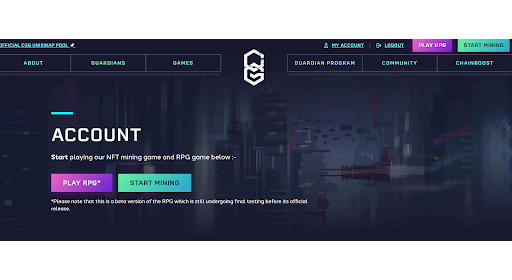
Select “Play RPG”. You’ll need to select your language, then proceed to the next page.
The base screen for the RPG looks like this:
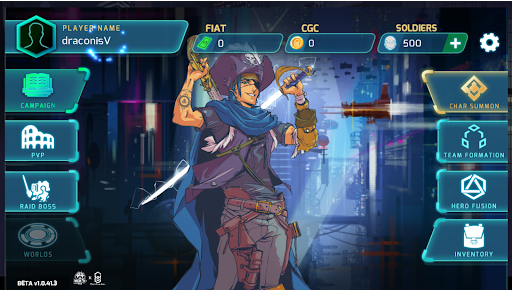
At this point, ChainGuardians starts to feel like a basic RPG game, but with a crypto flair. The RPG campaign takes place in a number of different worlds, each based on a different blockchain. Selecting a world, like the Bitcoin world, begins a sequence of missions.
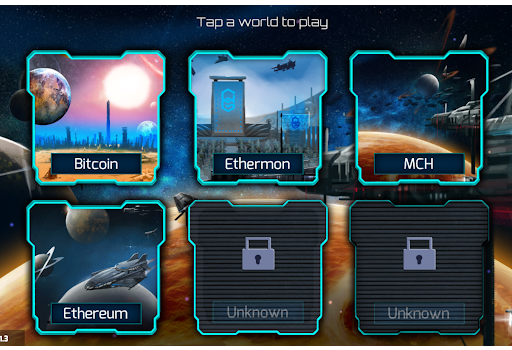
Gameplay itself is fairly straightforward. Pay close attention to your opponent’s status bar, which will indicate the attack they are currently using. Each attack type is vulnerable to a specific attack type of your own; figuring out when to use each one will power up your attacks.
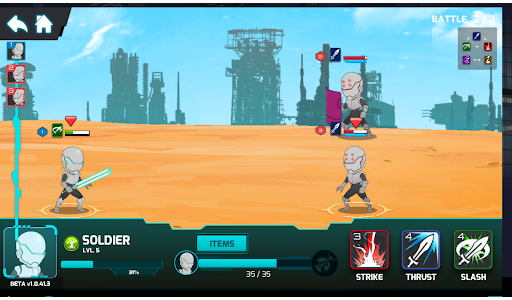
Successful missions deliver set amounts of CGC, which can be used to purchase more soldiers, upgrade weapons, attacks and armour, and to purchase the all-important guardians.
Guardians
Guardians are your fighting units, but not all units are guardians. The guardians themselves are the rarest characters and NFTs. They are created (mined) through the NFT minting process, and can also be purchased.
Captains and lieutenants
The lesser ranks of your soldiers are captains and lieutenants. You’ll get them in free crates unlocked in the course of gameplay, purchasable crates or the minting/mining process. Captains and lieutenants come in common, uncommon and rare varieties, each with their own unique stats.
Crucially, all guardians, captains and lieutenants also have a designated hash rate. The hash rate depends on the rarity of each guardian. The rarer the character/NFT, the higher its hash rate. Stake them in a mining pool or by solo mining and you’ll be more likely to win the block and earn more rewards.
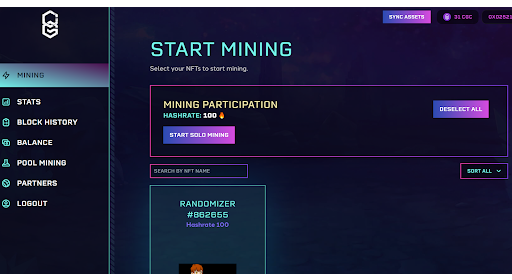
ChainGuardians frequently asked questions
More guides on Finder
-
Best private business loans in Canada
Check out some of the best private business loans in Canada to help you through seasonal shifts.
-
Apps like Wagepay for quick funding
Compare payday lenders and cash advance providers that offer loans like Wagepay.
-
Loans Like CreditNinja
Check out fees and features of these personal loan alternatives to CreditNinja in Canada.
-
Finder’s Editorial Review Board and expert contributors
Our expert contributors are a key part of Finder’s content. Learn more about the opportunities for experts who work with us.
-
Loans like Eastern Loans
Compare nine Eastern Loans alternatives to find funding that suits your needs.
-
Compare short-term loans in BC
Find out where to get a short-term loan in BC and how to get funded fast.
-
Same-day loans in Canada to help pay for emergencies
In a tight spot? These same-day loans can help, but they’re not all the same.
-
Best loan apps in Canada
Use our list to compare the best loan apps in Canada.
-
RBC Flex Choice Business Account Package review
Learn about the supported transactions, features and fees of the RBC Flex Choice Business Account Package.
-
How to Open a Chequing Account Online
With most banks, opening a chequing account online is a straightforward process
